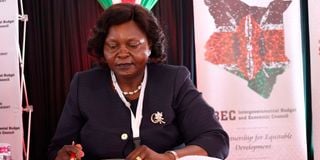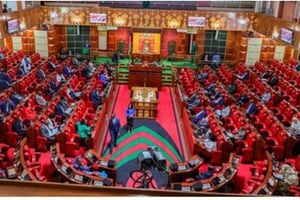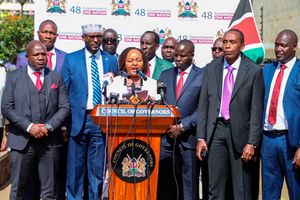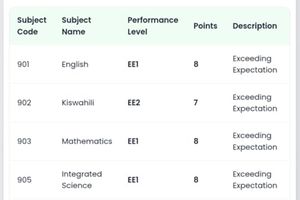
Counties will wait longer to know how they will share revenue among themselves starting next year due to a biting cash crunch at the Commission on Revenue Allocation (CRA).
The CRA has been hit with a Sh150 million budget cut, threatening the development of a new formula to dictate revenue-sharing for the next five years between June 30, 2024 and June 30, 2030. Parliament should finalise the process by December 2024.
The current formula, the third since the advent of devolution in 2013, has been in place since July 2020 and expires on June 30, 2025. CRA chair Mary Chebukati said a new formula should have been in place by July this year but the budget cuts triggered by withdrawal of the controversial Finance Bill, 2024 has seen the process run into headwinds.
She said the commission’s budget was slashed from Sh516 million to Sh366 million, which affected operations at the agency.
She said CRA needs Sh30 million to complete stakeholder engagements on the fourth-generation formula. The proposed formula seeks to include the use of dependable, up-to-date data to ensure fair distribution of resources among the 47 devolved units. This will be calculated based on basic share, population size, geographical area size, poverty index, Gross County Product, and the condition of paved and unpaved roads.
In April last year, CRA issued a public notice in local dailies inviting submissions on proposals for the fourth basis of revenue sharing among counties.
In May this year, the commission concluded a series of consultations with county governments as part of the journey to establish the formula.
In September, the CRA released a draft formula after months of meeting various stakeholders including the Council of Governors.
Once submitted, the Senate is required to consider and refine the formula before approving it by December to inform the revenue share in the next fiscal year.
In the draft formula, the CRA cited population as a key factor in determining counties' share of the revenue. It fronted six guidelines from the current eight and varied weights for some, retaining the population index and assigning it the biggest weight — at 36 percent — among the six. In the current formula, population weighs 18 percent.
The move triggered an uproar from leaders of less populous counties who are pushing for geographical size, another emotive parameter, to be given more weight despite CRA allocating it 10 percent from the current eight. Leaders from coastal and lakeside counties are also demanding that the geographical parameter includes water bodies.
In the guidelines, CRA has retained the basic share but varied the weight from the current 20 percent to 26 percent, the roads index reduced to four percent from eight percent while the poverty index weighed at 23 percent up from 14 percent.
The CRA has introduced 'economic activity' as a new parameter and given it a weight of four percent. On the other hand, CRA has dropped health, agriculture and urban services which were weighted at 17 percent, 10 percent and five percent respectively in the current formula.
The third basis of sharing revenue takes into account eight parameters — basic share at 20 percent, population (18 percent), health (17 percent), poverty level (14 percent), agriculture (10 percent), roads (eight percent), land (eight percent) and urban area (five percent).
Leaders from populous regions have been pushing for a formula pegged on population. However, less populous but expansive regions want the allocation pegged on physical distance.










